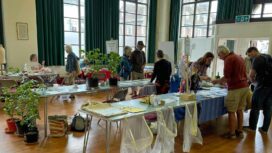The National Trust is pioneering a project to introduce grazing cattle to the Studland sand dunes and as a way of letting the public know, ten arty cow information boards have popped up across the bay.
Each of the wooden cows has been painted by a local school or organisation and represents an actual cow that will be arriving for summer 2021.

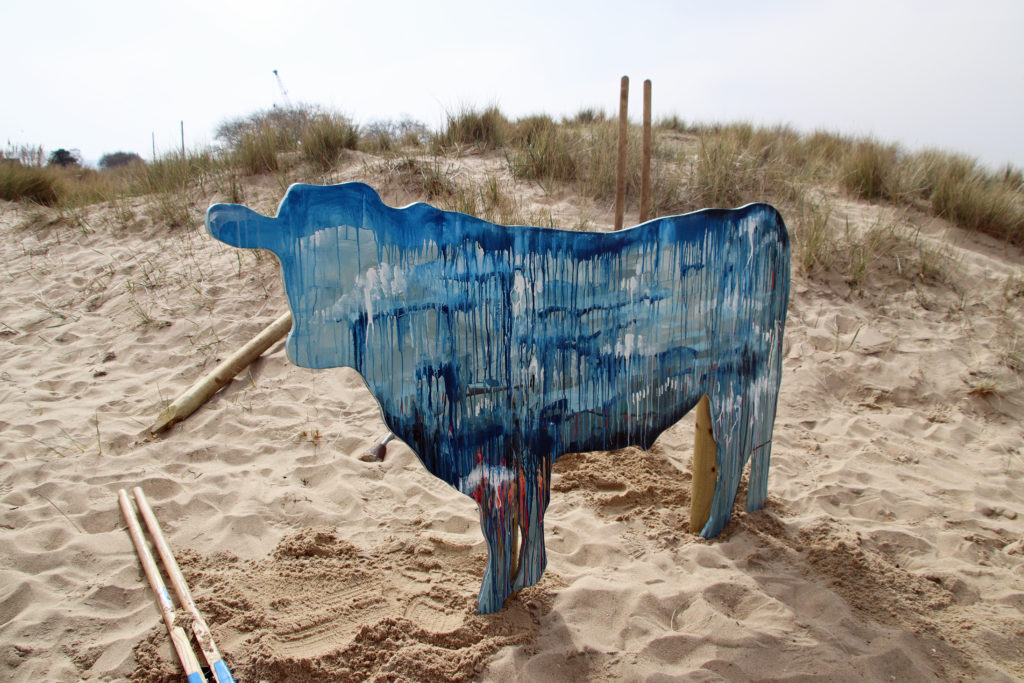
Installing the arty cows
The arty cow challenge
The young artists responsible for the eye-catching designs are from The Swanage School, Sandford St Martin’s Primary School, Purbeck Youth Club, Stoborough Primary School, Dorset Wellbeing and the Arts University Bournemouth.
There are ten arty cows to find and they have been dotted from Shell Bay into the dunes behind. So, as well as doing the National Trust Easter trail at Knoll Beach, children and adults can attempt the arty cow challenge by discovering all ten of them.

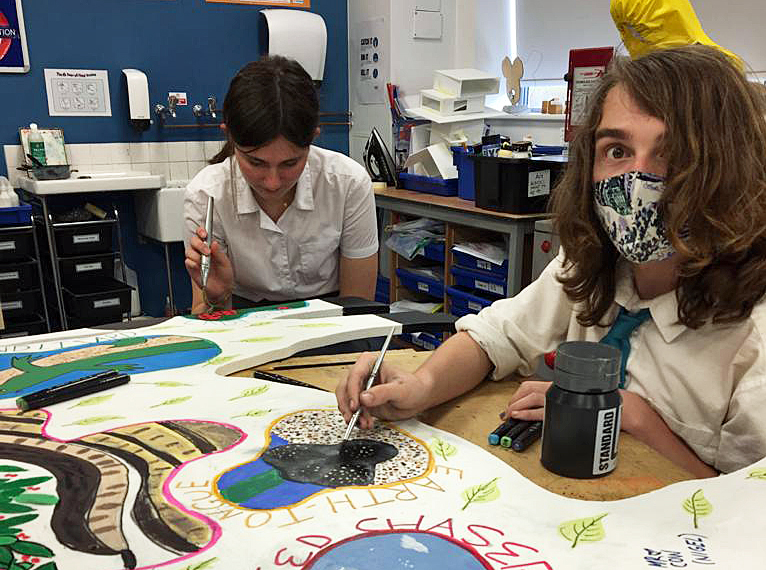
Students at The Swanage School painting one of the wooden cows
“A really exciting community-led project”
The National Trust engagement officer, Julia Galbenu who is leading on the Dynamic Dunescapes project said:
“The idea of raising awareness about the arrival of the real cows this summer was a collaboration between the students at the Arts University Bournemouth and us.
“I’m really grateful for all their hard work and creativity by cutting out the wooden cow shapes – they painted some of them too, along with the other organisations. It’s been a really exciting community-led project and hopefully others will have fun spotting the arty cows in the dunes!”
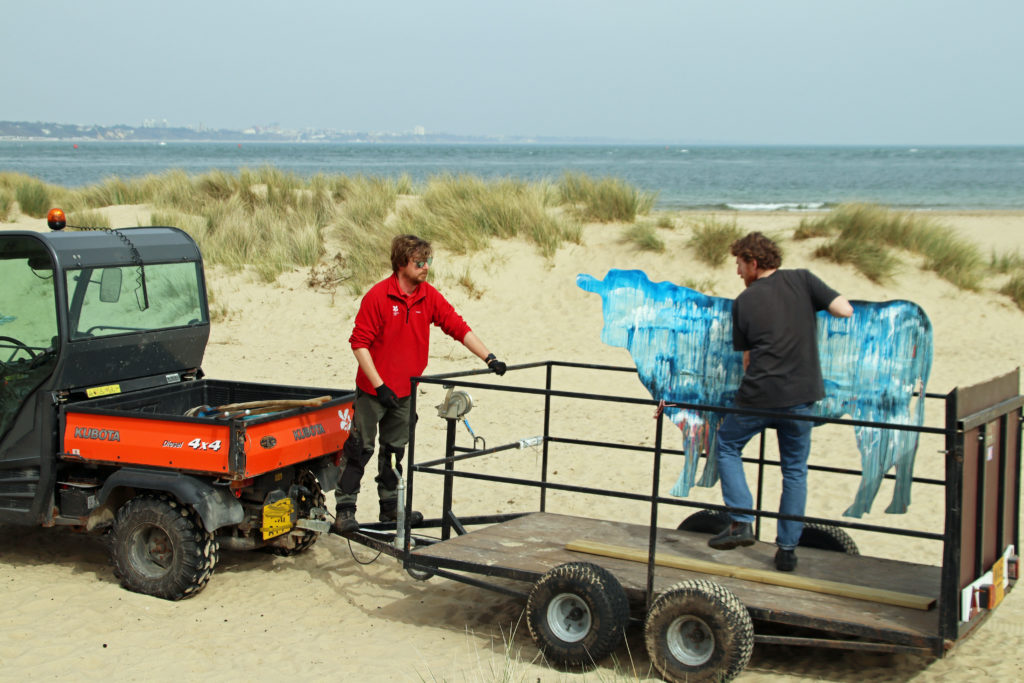
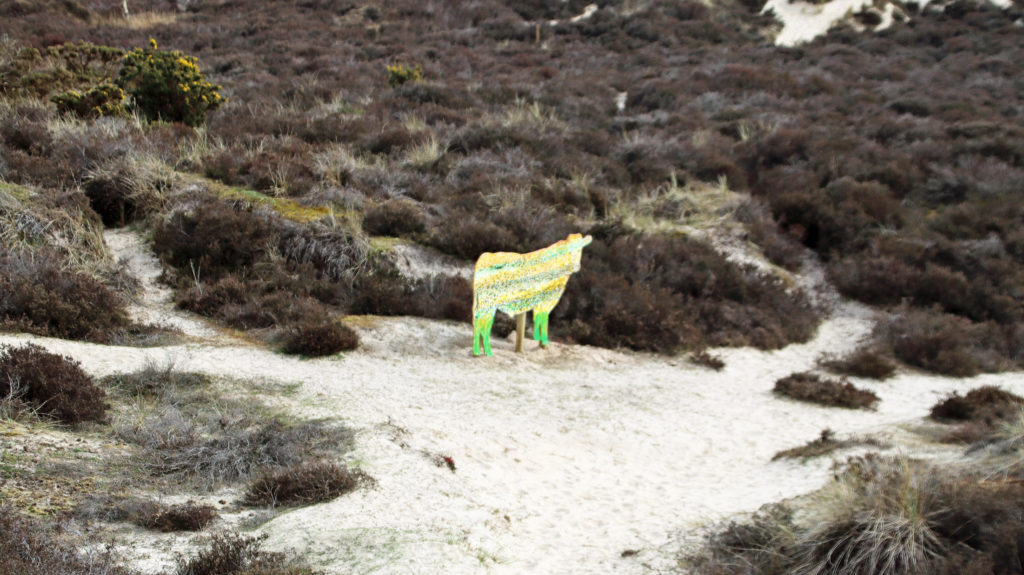
Restoring the dunes at Studland is of international importance
Over the years the sand dunes in Studland have become overgrown with vegetation, causing the open sandy habitat to disappear and rare wildlife like sand lizards to decline. In fact, across Europe, sand dunes are now designated as the habitat most at risk, so restoring the dunes at Studland is of international importance.
The ten Red Devon cows will reduce the most densely vegetated areas of the dunes by grazing on the purple moor grass and willow. They’ll also trample on the heather and gorse, helping to keep its growth under control.


The Red Devon cattle wearing the solar panelled GPS collars
New virtual fencing technology
The plan is to keep the cows away from the beach and the busiest paths, however the National Trust is keen to avoid installing too much traditional fencing. Instead it is going to trial new virtual fencing technology.
This is a way to keep livestock enclosed using a digital boundary on a phone app. The cattle wear solar panelled GPS collars, which play a tune to alert the animals when they approach the invisible fence line. If they cross it, the collar produces a small electric pulse – a fraction of a traditional electric fence.
The cows quickly learn
After a short training session, the cows quickly learn to turn away when they hear the tune, keeping them enclosed virtually.
However to ensure the safety of people and cattle, the National Trust is also installing a back-up fence with access gates along the busy Ferry Road.
It’s intended that the 10 Red Devon cows will spend the summer months in the dunes and will then return to a more conventional nearby field for the winter.
Further information
- Volunteers are encouraged to get involved in the project to restore the dunes and anyone who is interested should email the project engagement officer for details and keep an eye on the National Trust website and social media for updates.
- More about the cattle grazing project in Studland is on the National Trust website







